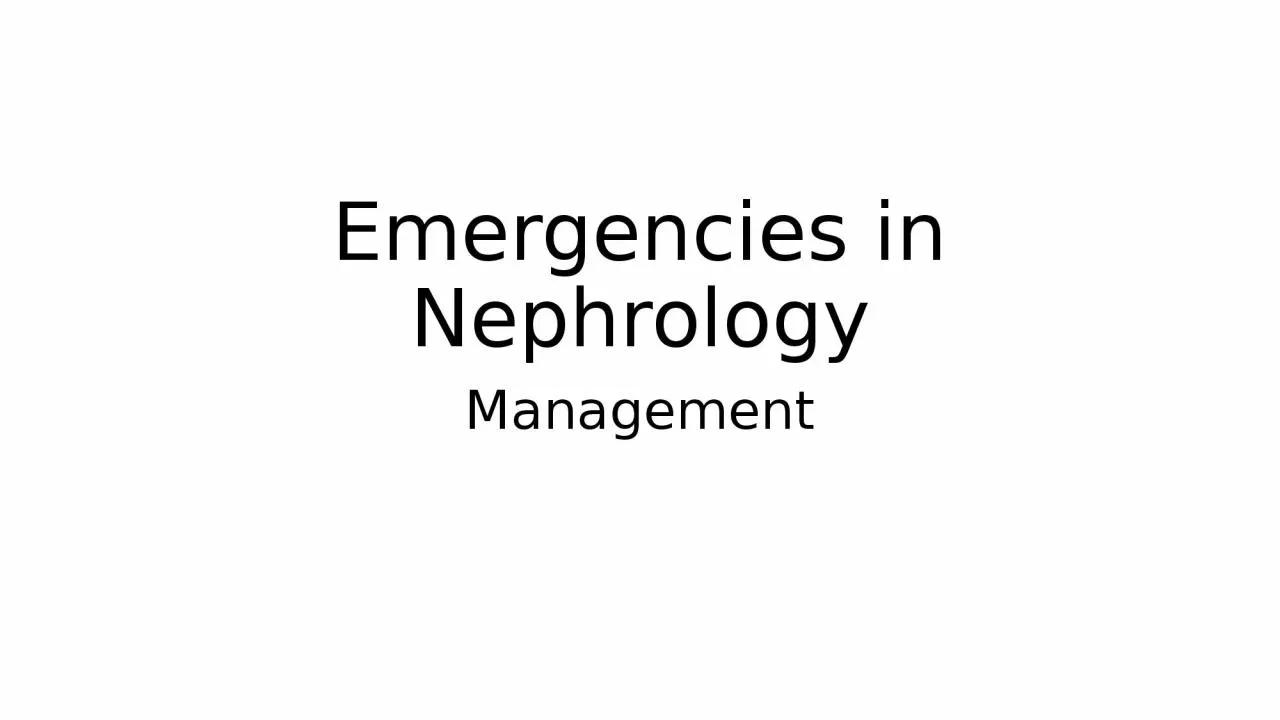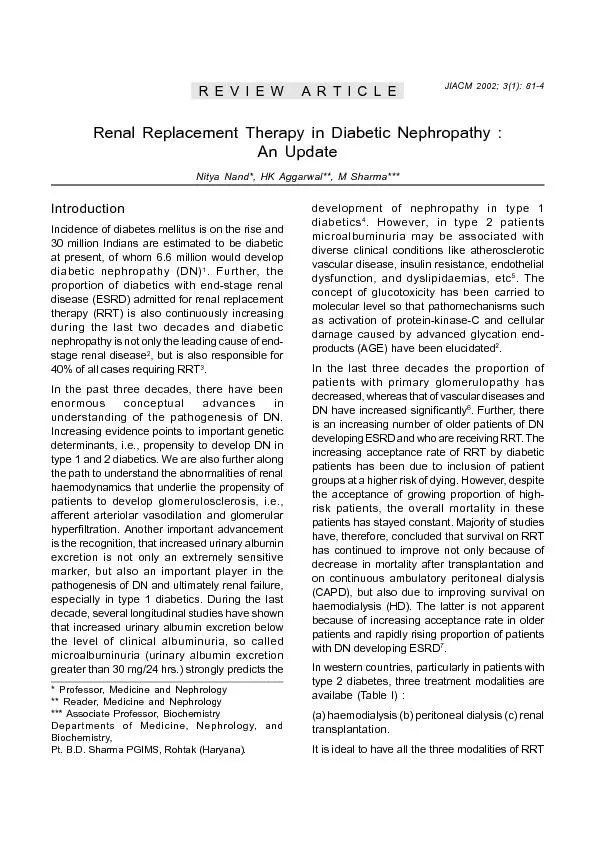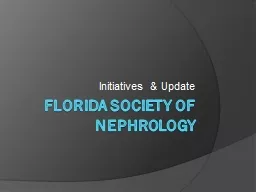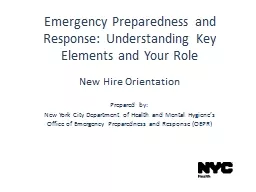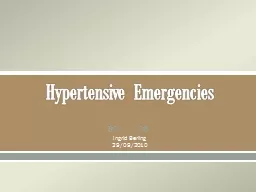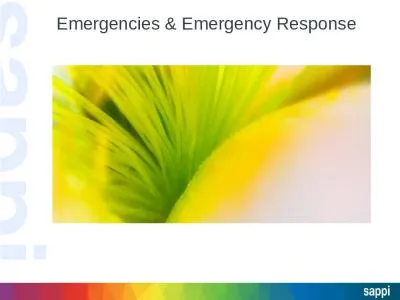PPT-Emergencies in Nephrology
Author : evelyn | Published Date : 2022-06-13
Management Topics Hyperkalemia Hyponatremia PD associated peritonitis Volatile alcohols Afterthoughts Hyperkalemia Case 62 year old woman ho ESRD who presented with
Presentation Embed Code
Download Presentation
Download Presentation The PPT/PDF document "Emergencies in Nephrology" is the property of its rightful owner. Permission is granted to download and print the materials on this website for personal, non-commercial use only, and to display it on your personal computer provided you do not modify the materials and that you retain all copyright notices contained in the materials. By downloading content from our website, you accept the terms of this agreement.
Emergencies in Nephrology: Transcript
Download Rules Of Document
"Emergencies in Nephrology"The content belongs to its owner. You may download and print it for personal use, without modification, and keep all copyright notices. By downloading, you agree to these terms.
Related Documents

